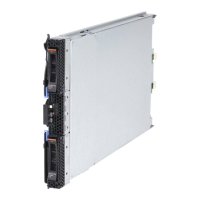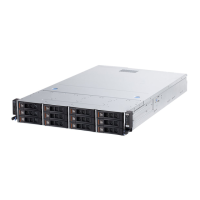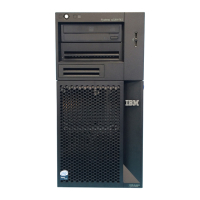Chapter 4. Continuous availability and manageability 121
Service processor
The service processor is a controller running its own operating system. It is a component on
the blade planar. The service processor operating system has specific programs and device
drivers for the service processor hardware. The host interface is a processor support interface
connected to the POWER processor. The service processor is always working, regardless of
the main system unit’s state. The system unit can be in the following states:
Standby (power off)
Operating, ready to start partitions
Operating with running logical partitions
The service processor is used to monitor and manage the system hardware resources and
devices. The service processor checks the system for errors, and accepting Advanced
System Management Interface (ASMI) Secure Sockets Layer (SSL) network connections.
The service processor provides the ability to view and manage the machine-wide settings
using the ASMI and BladeCenter AMM, and enables complete system and partition
management from IVM.
The two service processor Ethernet ports can be enabled by the AMM to an external network
and are used to access the ASMI. The ASMI can be accessed through an HTTP server that is
integrated into the service processor operating environment.
Operating system service menu
The system diagnostics consist of stand-alone diagnostics that are loaded from the DVD drive
in the BladeCenter media tray, and online diagnostics that are available through the operating
system.
Online diagnostics, when installed, are a part of the AIX or VIOS operating system on the disk
or server. They can be booted in single-user mode (service mode), run in maintenance mode,
or run concurrently (concurrent mode) with other applications. They have access to the AIX
error log and the AIX configuration data. The modes are as follows:
Service mode
This mode requires a service mode boot of the system and enables the checking of
system devices and features. Service mode provides the most complete checkout of the
system resources. All system resources, except the SCSI adapter and the disk drives
used for paging, can be tested.
Concurrent mode
This mode enables the normal system functions to continue as selected resources are
being checked. Because the system is running in normal operation, certain devices might
require additional actions by the user or diagnostic application before testing can be done.
Maintenance mode
This mode enables the checking of most system resources. Maintenance mode provides
the same test coverage as service mode. The difference between the two modes is the
way they are invoked. Maintenance mode requires that all activity on the operating system
be stopped. The shutdown -m command is used to stop all activity on the operating system
and put the operating system into maintenance mode.
You can also access the system diagnostics from a Network Installation Management (NIM)
server.
Note: The ASMI implementation in the PS700, PS701, and PS702 blades does not
provide for administrator login at the current time.

